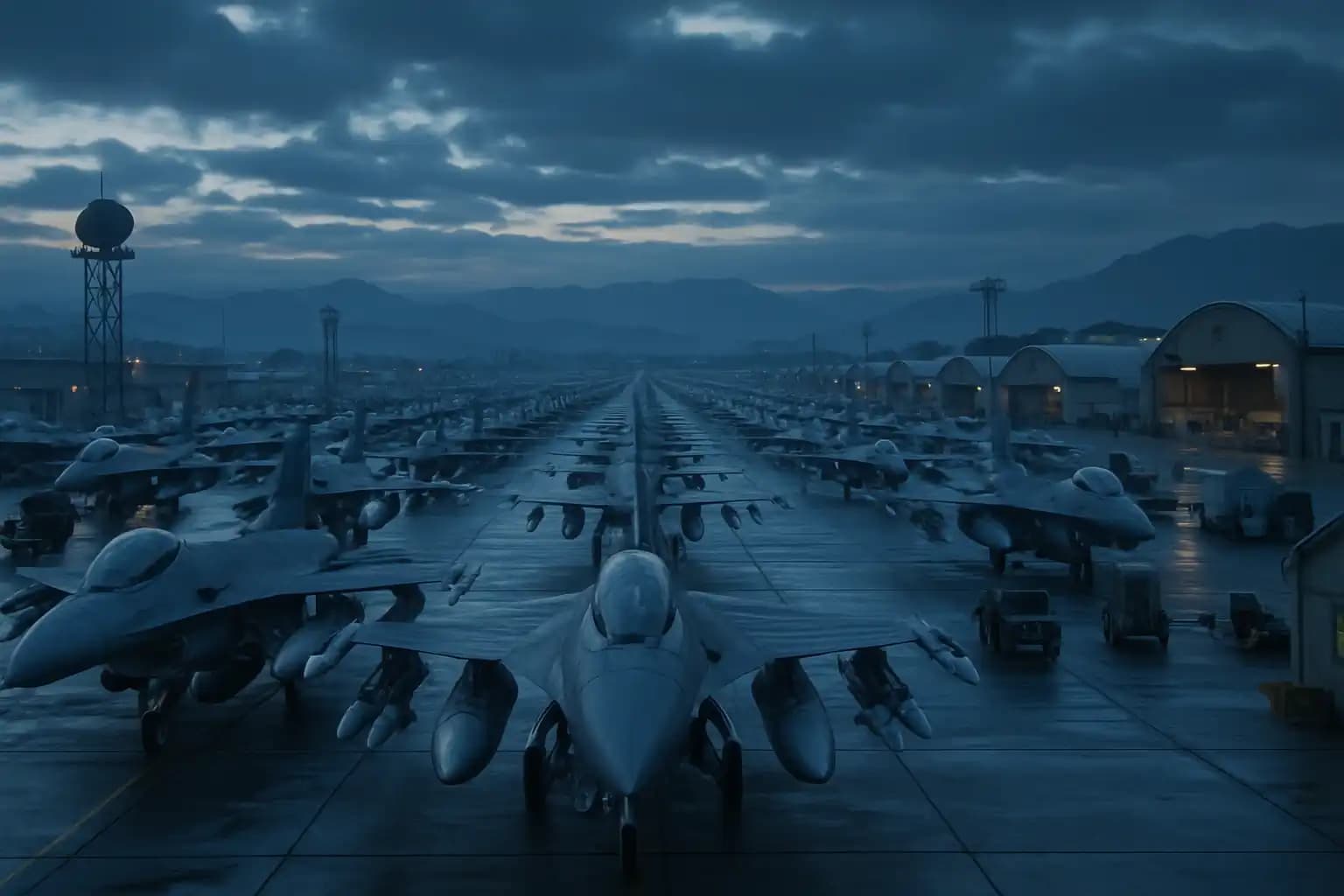The evolution of American airpower is a disruption centuries in the making. The US Air Force’s reliance on the number twenty-two (the traditional size of a fighter squadron since WWII) is being replaced by “Super Squadrons” at Osan Air Base in South Korea. This transformation, starting in 2024, marks a shift in a doctrine that powered victories from D-Day to the Cold War. So, why alter proven practice by more than doubling squadron size now—and why in Korea?
F-16 Super Squadrons: Tactical Rationale and Strategic Implications
Everything changed in the summer of 2024 when the US Air Force shifted additional F-16s to Osan. As noted by Air & Space Forces Magazine, the addition of nine F-16s created a “Super Squadron,” boosting one unit from 22 fighters to 31, with plans hinting at up to 60 under one commander. This leap is a direct response to North Korea’s growing missile capabilities and China’s ambitions, pushing US planners to concentrate overwhelming firepower for swift, decisive strikes.
This jet concentration aligns with broader trends in American and allied force structures, echoing efforts to maximize readiness and rapid deployment amid strategic uncertainty, similar to global operational escalations.
240 Missiles and the Edge of Aerial Lethality
These Super Squadrons are formidable not just because of their jet count—it’s the missile firepower that stands out. Emerging weapon technology reshapes the odds. The newest squadrons carry the AIM-260 Joint Advanced Tactical Missile (JATM), designed to surpass Chinese and Russian counterparts. According to technical documentation, a squadron of 60 jets could feasibly unleash upwards of 240 advanced missiles in a single surge.
This firepower dwarfs previous benchmarks, indicating that any adversary planning massed attacks would encounter a defensive wall distinct from earlier US doctrine. For those interested, recent field reports on Russia’s evolving weaponry provide a contrasting look at conventional and next-generation systems.
Pacific Posture: New Deployment Concepts and Forward Strategy
The move to Osan is just the beginning of a broader strategy shift. The Air Force is redesigning fighter deployments in the Pacific for high-end conflicts with China and North Korea. As RealClearDefense highlights, the REFORPAC exercise—scheduled to mobilize over 300 aircraft—is one example of how airpower might be dispersed and aggregated for effective deterrence and warfighting.
This reflects modular readiness seen in other tech-driven domains. With super-sized squadrons and coordinated multinational efforts, the US aims to flex military muscle—often breaking traditional playbooks. The need to adapt echoes in rapid-response scenarios outlined in this deep dive on strategic change and resilience.
Why It Matters: Doctrinal Disruption and Airpower’s Future
Replacing the “squadron 22” with 60-plus jets is more than a logistics challenge—it’s a bold operational wager in a new era of missile saturation and fluid power projection. The ability to deploy 240 advanced missiles in conflict opening hours serves both deterrence and domination. If Super Squadrons succeed in Korea, they may redefine Air Force combat power structures across the Pacific and beyond.
For further insights into changing power balances and their implications for war and statecraft, consult Unexplained.co or investigative reports on next-generation dominance like this analysis and stealth bomber advancements.
Ultimately, the shift to Super Squadrons acknowledges that peacetime rules can falter in the face of new realities. To understand the legacy of Air Force squadrons—and the implications of organizational changes—refer to the official history of these iconic units. The future of aerial combat promises to be massed, missile-laden, and more unpredictable than ever.
For more on the intersection of technology, risk, and doctrine, revisit reporting on mega-missiles, emerging threats, and military innovation in this feature and warnings from AI experts.




